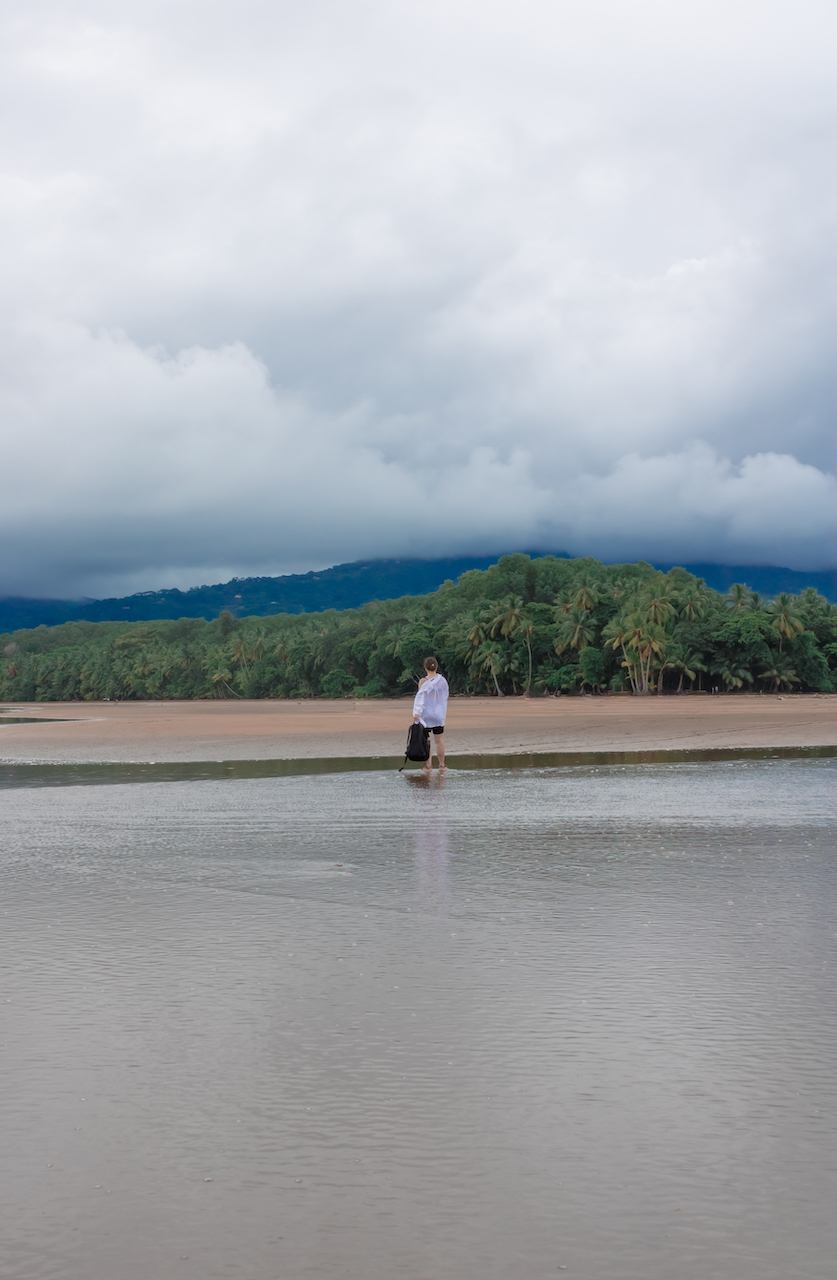
Imagine a place where lush green mountains plunge into the sea and bright blue and turquoise rivers carve through smooth rocks before making their way to the ocean. You’ll find all this and more at Uvita, Costa Rica, a small community nestled in between the jungle and the sea on the country’s Pacific coast and home to the famous Marino Ballena National Park, named for the sandy whale tail shape that peeps above the waves during low tide.
Uvita was my first official stop on my trip through Costa Rica. To say I started off with a bang is an understatement, as I was completely blown away by Uvita’s natural beauty.
Here’s my guide on how to get the most out of your stop in Uvita, with the best things to do, where to stay, and how to get there:
Things to Do in Uvita, Costa Rica
1. Visit the Catarata Uvita waterfall
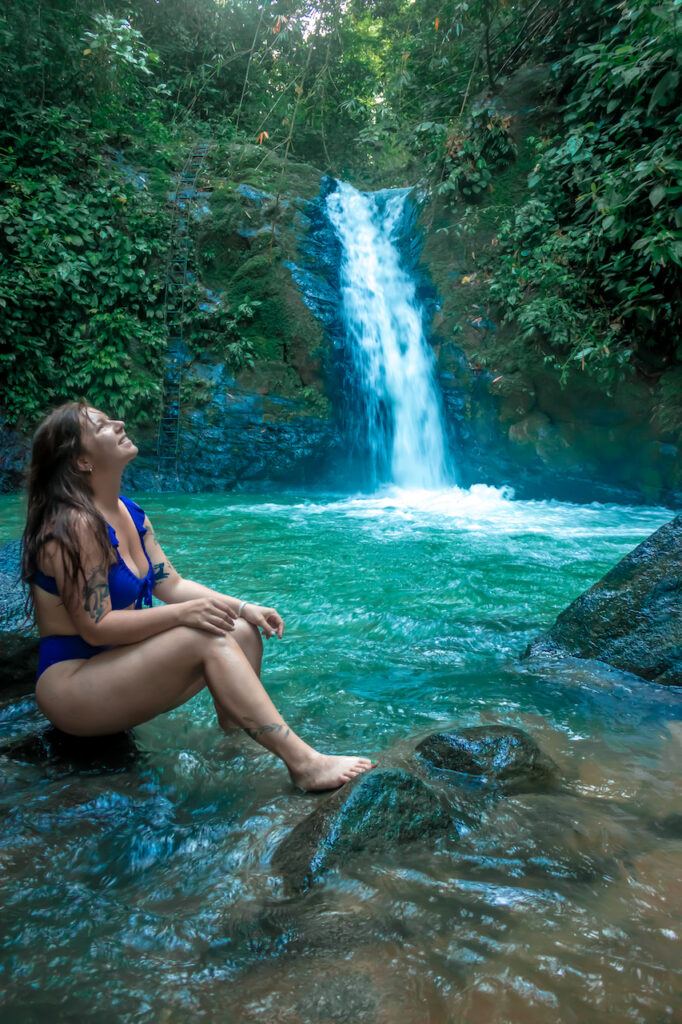
One of the highlights of Uvita is the Catarata Uvita, a small waterfall at the edge of town with turquoise waters that are perfect for a swim. The hike to reach the waterfall only takes about 10 minutes. You can find the trailhead at a small restaurant and bar where you’ll see signs for Catarata Uvita; the entrance fee costs 1,500 colones ($2.25 USD). The other way to get there is through the Catarata Esmarelda restaurant, but they charge 2,000 colones ($3 USD) for access to their path.
This attraction is one of the most popular in Uvita, so if you want to marvel at the waterfall in peace, get there early. I got there around 6am, before the trail was technically open, but was able to walk right in and had the waterfall to myself. Another day, I got there at 7am, was able to pay the entrance fee at the restaurant and had the same luck. The trail closes at 4pm, but it is never gated off. I assumed that visiting after that time was prohibited, but I wasn’t able to get a clear answer from anyone.
2. Discover a natural waterslide
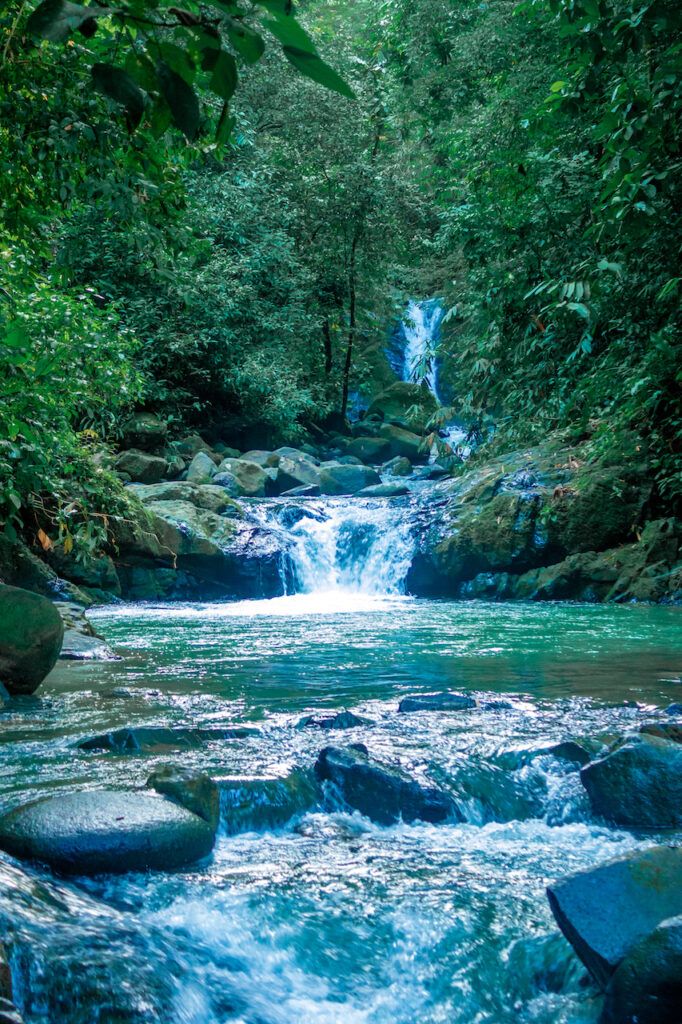
On the trail that leads to the waterfall, there’s a fork: the lefthand side goes to the waterfall; to the right you can follow the river. If you go to the right, you’ll find a small waterfall that acts as a natural waterslide into the pool below. The rocks are quite slippery, so make sure to exercise caution when climbing down. However, that’s what make the waterslide possible, as the slick stone makes the perfect chute for plunging into the water.
3. Find a hidden gem at Playa Arco

Walking along the beach to find the arches feels like a scene out of Jurassic Park. The wild crashing waves, rock formations along the shore, and endless greenery make for a stunning sight.
I got here right when the Marino Ballena Ranger Station was opening at 8am. This is the easiest way to get to Playa Arco, as you only have to pay the park entrance fee ($7 USD) and then hike for about 20 minutes. I was the only one there. Having the entire beach to myself made it even more magical. (This hidden beach is only accessible at low tide, however, so check the tide schedule before you go.)
Since Playa Arco is one of the most remote beaches in Uvita, there are no facilities, restaurants, or hotels close to the arches. The nearest bathroom is at the ranger station. The taxi from the main intersection in Uvita to the Marino Ballena Ranger Station cost me 3,000 colones ($5 USD) each way.
4. Take a yoga class
With such a laid-back vibe, it’s no surprise that Uvita is a haven for yogis. One of the best places to take a yoga class is Synergy Retreat Costa Rica. Sign up for a single class, or one of the center’s epic yoga retreats during which you’ll be able to practice in an idyllic setting, with the sounds of the jungle in the background.
5. Walk out to the whale tail at Marino Ballena National Park
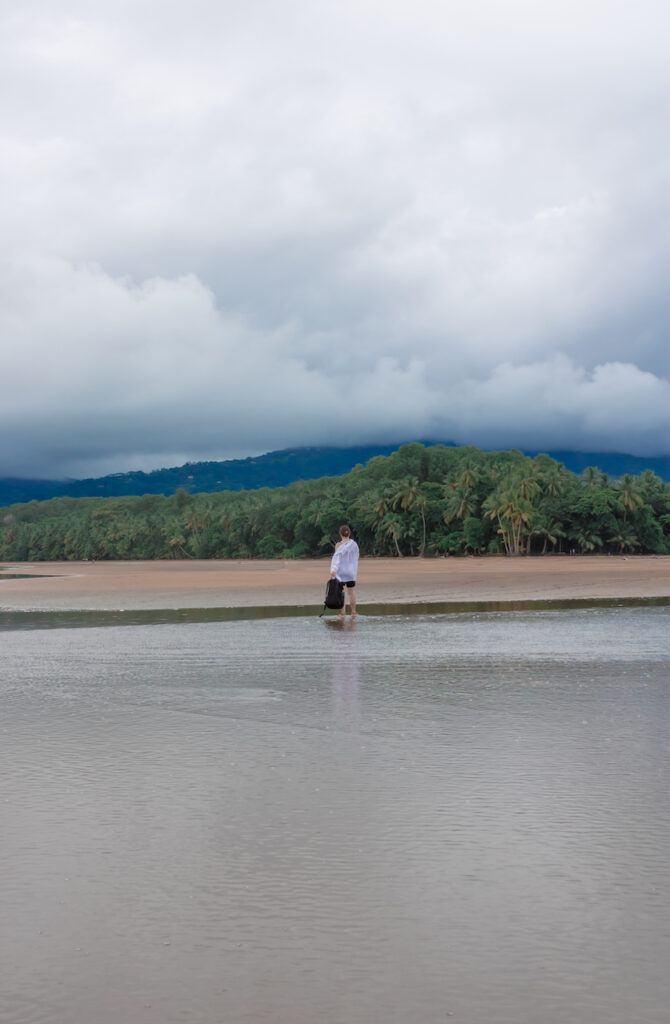
Uvita’s most famous attraction is Marino Ballena National Park, named after the stretch of sandy beach that forms the shape of a whale’s tail. You can only access the tail during low tide, and it’s hard to see without a drone, but it’s still worth going out to explore it.
Marino Ballena National Park costs $7 USD to visit and is open every day from 7am to 4pm. There’s a ton of wildlife here, with long stretches of sandy beaches to enjoy as well. I recommend going early, when the park opens, and spending the whole morning here.
6. Take a dip in a secret swimming hole
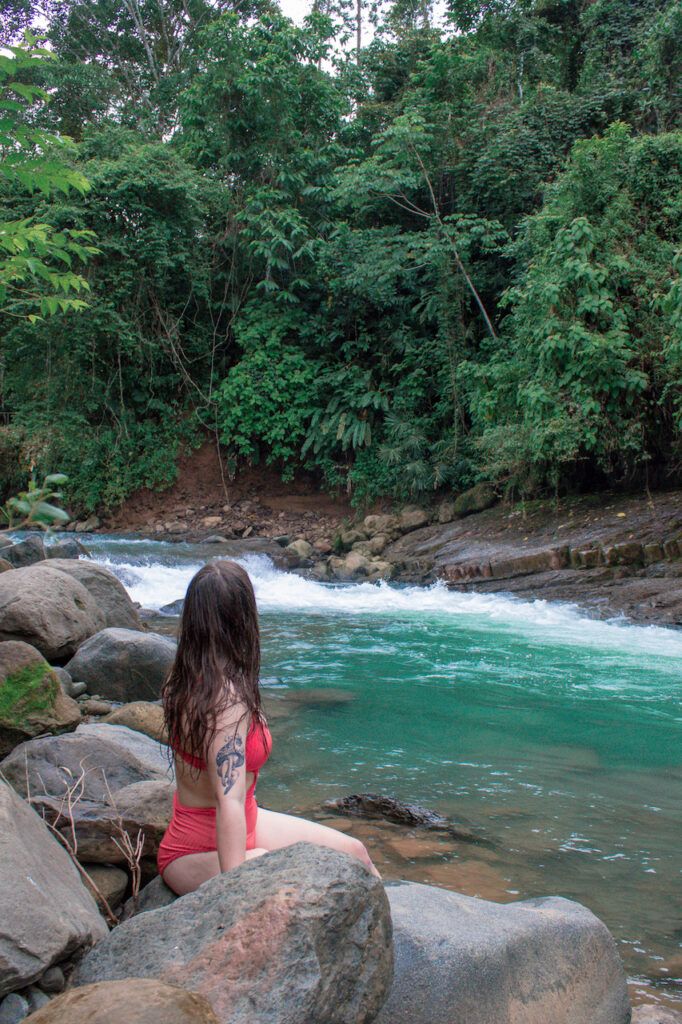
Bright turquoise waters and smooth river boulders await you at this gorgeous swimming hole on the Río Uvita, up in the mountains just outside of town. To get there, you have to walk up the mountain, past the Synergy Retreat Center. On the way, you’ll pass through the Bamboo Forest (more on that below) and find a trickling stream to your right. There’s a footpath there that leads you to the river. (You can find the exact location of the swimming hole on the map below.)
Since I was here during rainy season, the rapids were quite strong, and only the section in the photo above was safe to swim in. I went early in the morning, around 6am, and had the place to myself!
7. Wander through the Bamboo Forest
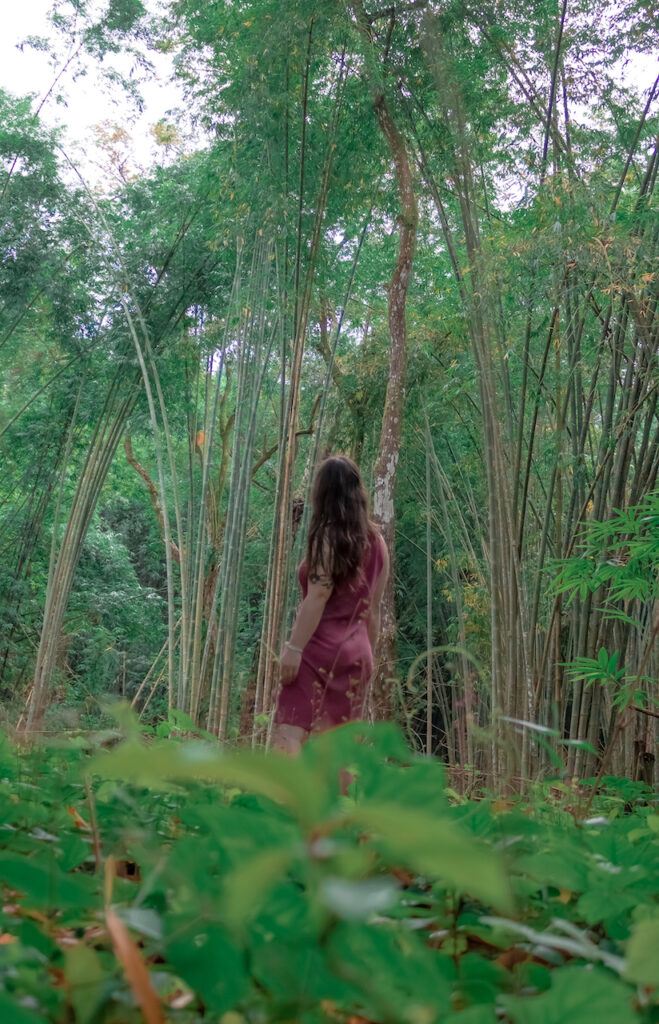
Imagine a forest with vertical shoots of bamboo so high you have to crane your head all the way back to see their tops. Just off a dirt road in Uvita, you can find this bright green paradise, the Bamboo Forest. I was curious about it, because I’d already seen a few giant bamboo bunches around town and was taken aback by their size. I walked through the forest for a while, just taking in the beauty of the trees. There’s also quite a bit of wildlife, and I saw a few monkeys while I explored.
The exact location of the Bamboo Forest is on the map below. Be careful when you visit, as some of it is on private property.
8. Hike along the Río Uvita
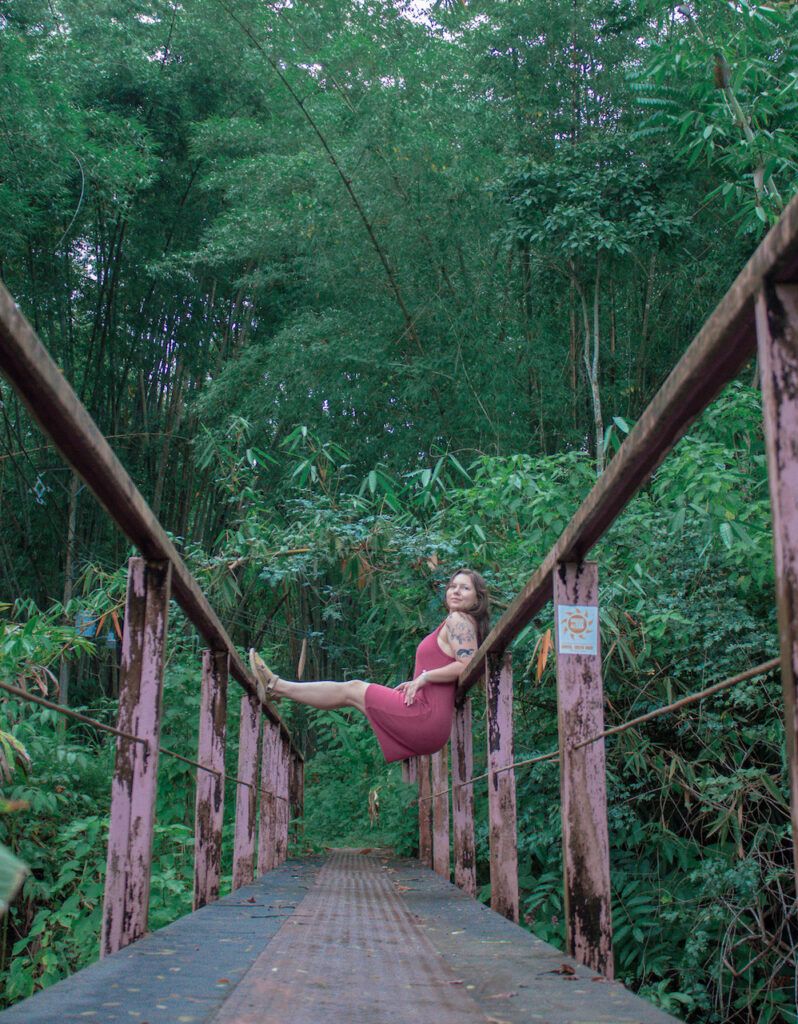
If you visit the swimming hole mentioned above, you can easily access the full footpath along the river. The path is well worth the hike, as you’ll likely see lots of critters along the way. There are also some scenic places, like this neat bridge, and others where you can get an awesome view of the river.
I recommend doing this short hike early in the morning. I saw so many colorful birds, monkeys, and other animals along the way at that time. There was also nobody else around, which made it even more special.
To get to the trail, follow Calle la Faralla past the fork with Calle Bejuco. Go until you see the bridge in the photo above, where the river runs underneath. Just after the bridge, you’ll see a small path leading down to the river. You can follow that path for a few kilometers before it disappears. The watering hole is along the way, too!
9. Check out Playa Ventanas
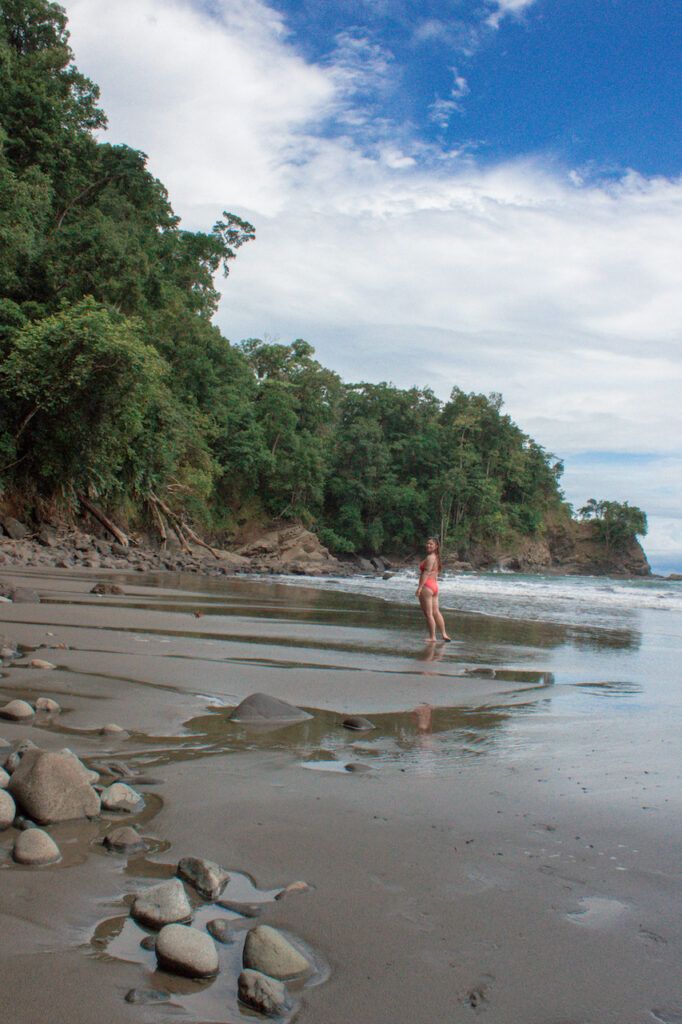
About a 10-minute drive from the main intersection in Uvita is a gorgeous cove where you’ll find Playa Ventanas. Popular among locals who fill the beach on the weekends, this place was one of my favorites near town. The sand is soft and scattered with smooth river rocks, big and small. Sometimes it’s too rough to swim here, so make sure the lifeguards give the “all clear” before you get in the water.
There are bathrooms available, along with a few food stands and delicious coconuts for sale. They’ll even throw some rum in one if you ask for a “coco loco.”
Getting here was simple, as I caught a southbound bus in front of the veterinary clinic by the main intersection in town. Tell the driver you’re going to Playa Ventanas and you’ll pay 1,700 colones ($2.55 USD). Getting back is tricky without a vehicle: I waited almost an hour for a bus back to Uvita and ended up hitchhiking.
10. Take a surf lesson
Uvita is a great place to take a surf lesson, as there are parts of the beach where the waves are more gentle and easier to learn on. You can take a lesson inside Marino Ballena National Park at Playa Chamán, where there are no rocks or countercurrents that make surfing more challenging. If you visit during the rainy season like I did, you risk having your class rescheduled due to the weather, so having some flexibility in your itinerary is key.
Surfing Uvita is also a great option for taking a surf lesson, as the instructors are knowledgable and professional. They offer private or group classes, which vary in price but start at $50 USD.
11. Take a day trip to Dominical
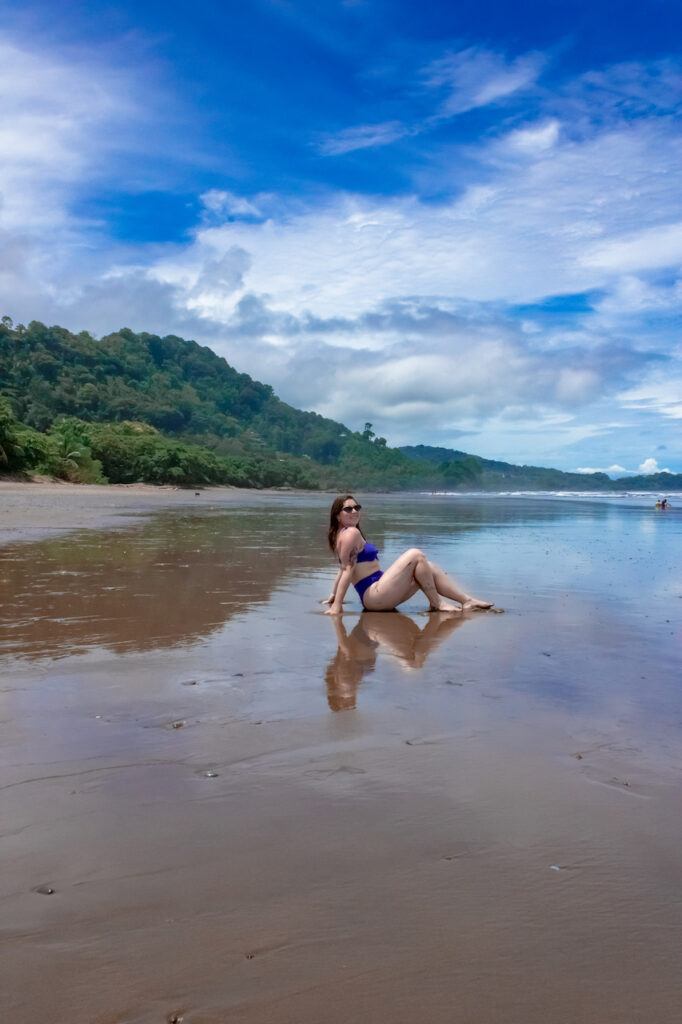
I fell head over heels in love with Dominical. This small community totally embraces the hippie surfer lifestyle and has a huge swath of pristine beach that left me plotting a future trip.
Dominical has a small town center with shops and restaurants, including a stretch next to the beach where artisan vendors set up shop and sell everything from handmade jewelry to wood carvings and boho-style clothing.
It’s also another stellar place to take a surf lesson, but it’ll cost you $50-65 USD, depending on if you choose a group class or a private lesson. I decided that I’d rather enjoy the beach from shore, and had a fantastic time doing so.
If you’re heading to the Pacific coast without a car, Dominical may be a better choice than Uvita. It’s smaller and therefore easier to get around on foot, plus the beach isn’t inside a national park, so it’s more accessible. I also noticed that accommodations and even food at restaurants was cheaper here, giving it more points for backpackers like me.
12. Embrace the slow pace of life
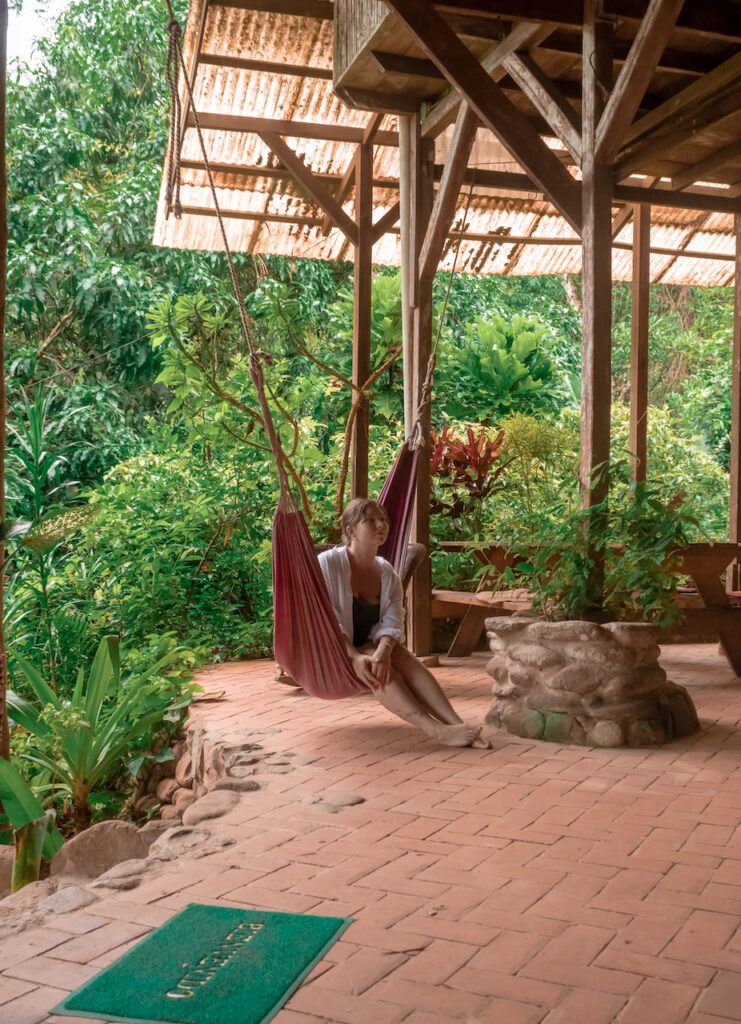
I have to admit that sometimes when I’m traveling, it’s hard to turn my brain off or really settle into relaxation. As soon as I stepped foot in Uvita, I was immediately aware that a racing mind and a need for things to be quick and efficient wasn’t going to fly here. Uvita was my first taste of the “pura vida” lifestyle, and the chill atmosphere made me think twice about trying to pack a million things into my itinerary.
I recommend planning at least one totally lazy day while you’re in Uvita. Whether you enjoy the calm vibe at the beach, in the jungle, or even at your accommodations, having nothing on your to-do list just might be the best way to truly enjoy the magic of this peaceful beach town. I noticed that taking a moment to intentionally slow down helped me take in my surroundings a lot more, which made my stop here even more worth it.
Where to Stay in Uvita
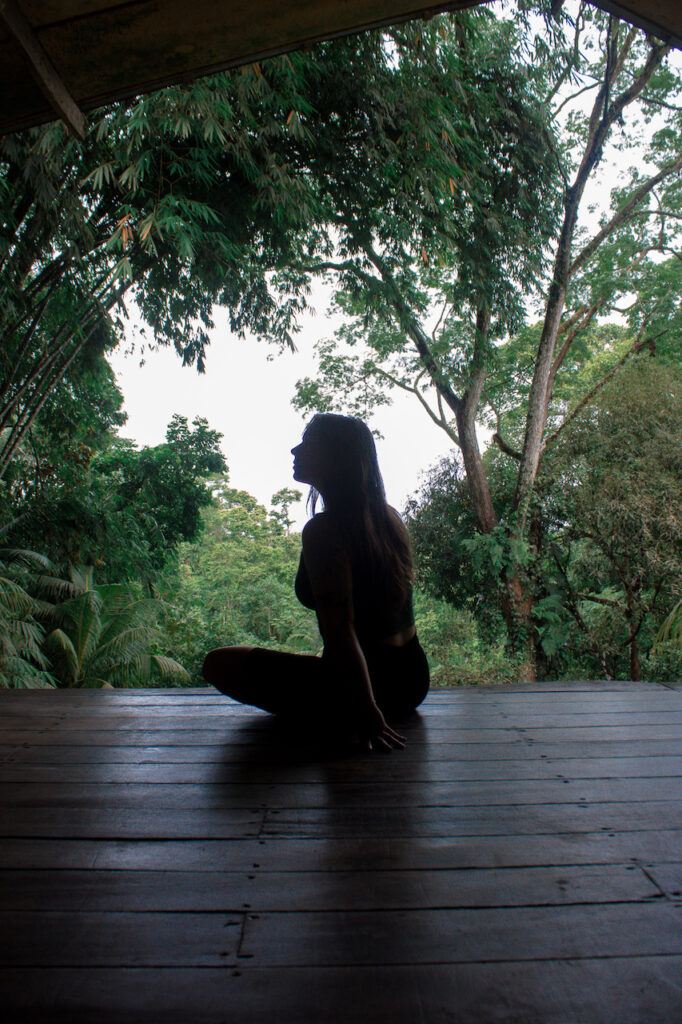
When choosing a place to stay in Uvita, make sure to consider the town’s layout and the distance you’re willing to walk from place to place. If you’re renting a car, this is less of a concern, but not having one means location is key.
Uvita is divided into three sections: the hillside jungly part, the town center along the highway, and the area outside Marino Ballena National Park, which is the closest you can get to the beach. I stayed in the hillside jungly area, which was about a 15-minute walk to the highway.
The place I stayed at is called Hostel Cascada Verde. Surrounded by nature, it’s just a few minutes from the Catarata Uvita waterfall. It has a treehouse feel and was a dream to stay in. I woke up every morning to the sound of howler monkeys and birds, and went to sleep to the sound of heavy rain. From the upstairs balcony and even the room I stayed in, I could see all the way to the ocean through a gap in the trees. It was a peaceful place to stay, and the staff were incredibly friendly and accommodating.
The only drawback of staying there was the long walk to town. Since taxis can be tricky to come by in Uvita and often overcharge, I did a lot of walking and got caught in the rain too many times to count. Overall, though, it was worth it, and I would stay there again.
How to Get to Uvita
Uvita is a bit off the beaten path, on the Pacific coast of Costa Rica. To get there from San José, you can take the 7:30am Tracopa bus, which costs only 7,000 colones ($10.20 USD). The ride was only about 5 hours and scenic the whole way. Make sure to get to the bus station early, since the buses occasionally leave ahead of schedule. I got there at 7am sharp and the bus left right on time.
Once you get to Uvita, transportation can be tricky if you don’t have a car. I realized very quickly that this is a destination that is significantly easier to navigate with a rental car, as everything is quite spread out. The main beach in town, Playa Uvita, is part of the Marino Ballena National Park, which is protected land. There are no hotels in Uvita that are right on the beach, so to get there you either have to rent a bike or rely on taxis. I found that the taxis here are unreliable and very few.
Map of Uvita, Costa Rica
Pin me for later:


There are seemingly endless places to chose from on Costa Rica’s Pacific coast, from huge resort cities to sleepy towns like Uvita. I prefer the latter, and was thrilled to see a beach town without any construction on the beach itself. It’s a dream destination for travelers who prefer peace and quiet, who thrive in places where they can connect with nature.
Planning a trip to Uvita? Let us know if there’s anything else on your bucket list there!